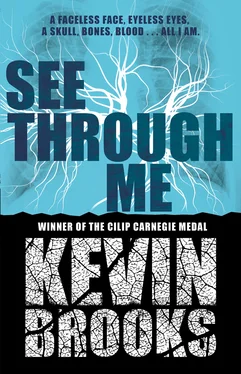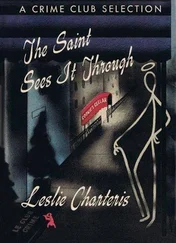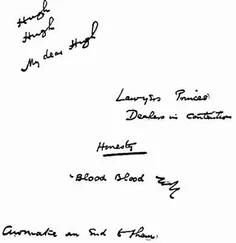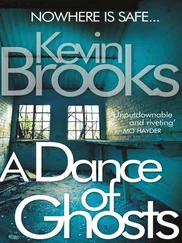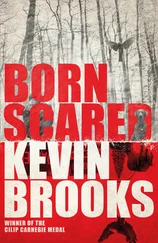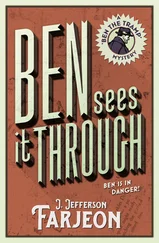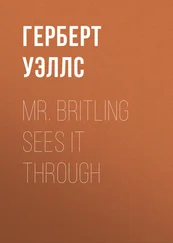‘Did you find anything?’
‘It’s complicated . . .’
Everything, it seemed, was complicated.
‘I’m not trying to be evasive, Kenzie,’ Dr Reynolds explained. ‘It’s just that everything will make a lot more sense once I’ve told you about your grandmother and your mum. So if you’ll let me –’
‘What’s my mum got to do with it?’
He was just about to answer when Dad suddenly leaned forward on the settee, taking us both by surprise. It gave Dr Hahn a bit of a start too. We all turned to look at him, our heads moving in unison, and when I saw Dad sitting there – perched alertly on the edge of the settee, staring hard at Dr Reynolds – I knew he was back.
‘I told you already,’ he said. ‘I don’t want anything to do with that woman.’
He was definitely back.
Sometimes it was easier when he was gone.
‘That woman’ was Nan, my grandmother. Elsa Forde. Dad never called her by name. She was always ‘that woman’ to him.
She was blind.
‘We’ve spoken to her GP and her ophthalmologist,’ Dr Reynolds said, ‘and there seems to be some uncertainty around the precise cause of her blindness. Some of her symptoms are indicative of a condition called Fuchs’ disease, or Fuch’s corneal dystrophy, but she also has symptoms that aren’t typical of Fuchs’.’
‘What’s any of this got to do with Kenzie?’ Dad said. ‘She’s not blind, is she?’
I’m not sure why I didn’t say anything then. It might have been that I didn’t want to agitate Dad any further, and I knew that if I told him that actually I had lost my sight for a while, it wouldn’t just make him look a bit stupid, it would also make him think that I was somehow siding with Nan, and that was something I’d learned to avoid a long time ago. Or it might have been something else that stopped me from saying anything about my temporary blindness. It might have been that at times I was finding it hard to distinguish between the weird stuff I’d actually been through and the weird stuff I’d just dreamed or imagined, and I didn’t want to make a fool of myself by claiming I’d been blind when in fact I’d only dreamed it. But from the knowing glance that Dr Reynolds gave me – as if to say, ‘Keep it to yourself for now,’ – I guessed I hadn’t dreamed it after all. Unless, of course, I was still dreaming now . . .
There were brief moments in those early days when I thought it all had to be a dream. I’d look at myself, see the stuff of myself – guts, bone, muscle – and I’d know it was impossible. This . . . this thing, this mutant body . . . it just couldn’t be . It had to be a dream . . . a nightmare . . . it had to be.
But I never believed it for more than a moment.
You can think things are real when you’re dreaming, but it doesn’t work the other way round. You can wish for your reality to be a dream, and you can live out those wishes in books and films, but in reality – the real reality – you can’t mistake anything for a dream.
‘At the moment, Mr Clark,’ Dr Reynolds said calmly, ‘all we’re trying to do is examine the possibility that there might be a hereditary factor to Kenzie’s condition, and in order to do that thoroughly we have to consider every possible connection, no matter how unrelated it might seem. For example, there’s no obvious link between your mother-in-law’s blindness and Kenzie’s condition, but despite the uncertainty over the cause of her blindness, it’s clearly a genetic disorder of some kind, and – more to the point – it’s a disorder that affects the cornea. Do you know what that is?’
Dad just shrugged.
Dr Reynolds looked at me.
‘It’s the front part of your eye,’ I said. ‘The outer layer of it.’
He nodded. ‘And do you know what distinguishes it from almost every other part of the human body?’
I shook my head.
‘It’s one of the only two parts that are transparent . . . the other one being the lens.’
As he paused for a few moments to let that sink in, the silence seemed to hang in the air, as if it too was trying to weigh up the significance of the doctor’s words.
‘There’s also the fact that the cornea transmits and focuses light into the eye,’ he went on. ‘And while that’s not directly comparable to the way in which Kenzie’s transparency is affected by light, both processes share the same fundamental principle of human cells interacting with light.’
‘But what does that mean?’ Dad said. ‘Are you saying that –?’
‘We don’t know what it means yet, Mr Clark. That’s what I’m trying to tell you. It might be nothing, it might be something. And it might just be the key to finding out what’s wrong with your daughter. And I’m sure you’ll agree that’s the only thing that matters.’
‘Of course,’ Dad said.
Of course.
The sequencing and analysis of Nan’s DNA was still in its early stages, Dr Reynolds explained. Part of the reason for the delay was that he’d assumed, given the genetic nature of her blindness, that Nan’s genome would already have been sequenced, and it had taken a while to find out that for some reason it hadn’t. It had also taken a while to realise that there was no communication between Dad and her, so she had to be contacted directly.
Dad had given his consent for gene sequencing to be carried out on himself as well as me, and although there was still a lot of work to be done, the basic analysis of both sets of results had already been completed. He’d also agreed to Dr Reynolds request to sequence my mum’s DNA.
I didn’t want to know how that had been done.
I didn’t want to know that her DNA had been extracted from tissue samples that had been retained after her post-mortem.
I didn’t want to know . . .
‘Is there anything in Mum’s DNA that shows why she died?’ I said.
‘We haven’t found any known abnormalities,’ Dr Reynolds told me. ‘What we have found though . . .’ He paused, frowning, scratching his head. ‘This is very difficult to explain . . . in fact, to be perfectly honest with you, we’re still struggling to understand it ourselves. All we really know at the moment is that four out of the five genomes we’re working on share a very distinctive abnormality that, as far as we can tell, has never been seen before. In all four cases it’s located in the same segment of so-called junk DNA, and the structure and form of the four mutations is very nearly identical. However . . .’
‘Whose is the fifth genome?’ I asked him. ‘The one without this abnormality?’
‘Sorry,’ he said. ‘I should have made that clearer. The four linked genomes are yours, your brother’s, your nan’s, and your mum’s. Your dad’s sequencing hasn’t revealed anything.’
I looked at Dad.
He shrugged, his face blank.
There was something in his eyes though, something vaguely familiar, and as he looked away from me – possibly trying to hide it – I wondered if he was beginning to feel a twisted sense of vindication. There was nothing wrong with his DNA, was there? If inherited genes were to blame for his children’s sickness, they hadn’t come from him, had they? And if they’d come from Mum, and they’d maybe even been the cause of her death, who had she inherited them from? Her mother, of course. Who else?
Or maybe I was wrong. Maybe Dad wasn’t thinking anything of the sort. Maybe he was just broken . . .
Messed up.
Incapable.
Bereft.
What did I know?
‘The differences in each of the four abnormalities are minuscule,’ Dr Reynolds continued. ‘In fact, they’re so minute – and so seemingly inconsequential – that they’re very easy to overlook. But once we began looking into them, it gradually became apparent that these almost imperceptible variations could be the answer to everything. We still don’t know exactly what they are, or how they function, but we’re reasonably confident now that these small variations create some kind of link between their parent abnormality and the gene variant that causes the relevant disorder. So in your nan’s case, the unknown mutation is linked to the variant that causes her blindness, and with Finch it’s linked to the abnormality responsible for his MD. We also think it’s possible that these links have something to do with the irregularities in the presentation of both disorders.’
Читать дальше
